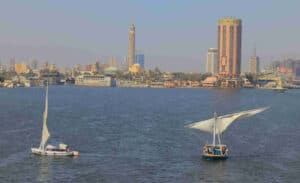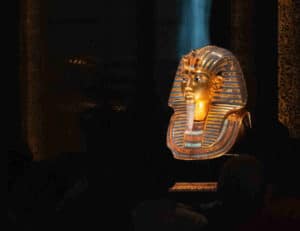It is worthwhile to know the contributions of the main dynasties in Islamic Cairo, as this neighborhood (and its surroundings) is the area that acquired the greatest development since the Arab conquest. And it is that since the arrival and conquest of the Arabs in Egypt (year 639 of the western calendar, 17 of the Hegira), different dynasties of Muslim religion succeeded each other in the country. To the eyes of a traveler not versed in the subject, the architecture and art may seem similar in all these periods, but if we delve a little deeper, we will understand the differences.
Early (lost) contributions: Umayyad and Abbasid
The first two dynasties that contributed in some way to Cairo were the Umayyads and the Abbasids. The former were the reigning dynasty with their capital in Damascus and, at the height of Muslim expansionism, founded al-Fustat, the military camp that is considered the origin of present-day Cairo… and of which nothing remains. The Abbasids were their successors, moving the capital of the caliphate to Baghdad and expanding the settlement of Fustat until it became definitive.
Tulunids, the first independent Egyptians
The Tulunid dynasty succeeded the Abbasid dynasty in Egypt and, although it was short-lived and not as famous as others, it is very important for two reasons. First, because it declared its independence from the Abbasid caliphate. And second, because the oldest mosque preserved in the city (ninth century) was erected precisely at this time: that of Ibn Tulum, founder of the dynasty. Its architecture is more sober and simple than that of later times, but it is striking for its clear influence of early Muslim constructions, such as its arches and domes and, above all, its unique helical minaret, inspired by the famous minaret of the Great Mosque of Samarra.
Fatimids: key Shiites for the city
In the tenth century began another key period for Cairo: the irruption of the Fatimid dynasty, of Shiite creed. It was the one that gave the current name to the city(Al-Qahira, which means ‘the victory’), expanding it enormously as a royal, military and administrative precinct. It was a caliphate of enormous influence, rivaling the Abbasid of Baghdad and the Umayyad of Cordoba. Its Al-Azhar mosque is probably the most famous and important of its time, but due to successive extensions and modifications, there are few original elements from this period, with the exception of the beautiful arcaded courtyard with pointed arches. Therefore, it can be said that the great contribution of this dynasty was the mosque of Al-Hakim, especially because it preserves the oldest minarets of the city, robust, independent and in brick.
Ayyubids: Saladin’s legacy
After the Fatimid dynasty, which ended with social instability, the Ayyubids arrived and restored order. In particular, the warlord Saladin, of Kurdish origin. His reign was brief (barely 80 years between the 12th and 13th centuries), but he and his successors built one of the city’s major monuments: the Citadel on the hills of Mokattam, which was the main center of power and administration from then on, a masterpiece of defensive architecture, with the threat of the Crusaders in mind.
Mamluks: military caste that embellished the city
From the middle of the 13th century, the Mamluk dynasty, whose origin was a local military caste, remained as the reigning dynasty. To them we owe many works of expansion and beautification of the city, both in religious and civil buildings. Beyond the many works in mosques, we can highlight the madrasas of Al-Nasir Muhammad and Sultan Qaytbay, full of refinement, as well as the construction of the Jan el-Jalili bazaar, authentic commercial epicenter of the city since the fourteenth century and symbol of Cairo that reached its zenith with this dynasty.
Ottomans: relegated but monumental
After the Ottoman conquest of 1516, Egypt became a province of that empire, falling into the background. But paradoxical as it may seem, the Ottoman imprint is very palpable, as the style in vogue in Istanbul and the rest of Turkey has deeply penetrated here, especially with the proliferation of slender and sharp minarets, or with mosques built from scratch, such as the famous Alabaster Mosque in the Citadel, from the time of Mehmet Ali (19th century).



